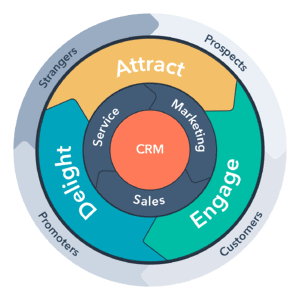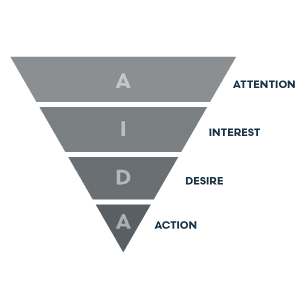Website Not Producing Quality Leads? It’s Time to Modernize Your B2B Marketing

Does your company website or digital marketing fail to deliver high-quality leads and engage your buyers?
If you answered “yes,” it’s not just you. Gartner says that 77% of B2B customers describe their purchasing experience as too complex and challenging.
Part of the reason business-to-business buyers struggle with purchasing decisions has been the growing complexity of B2B products and solutions. Purchase decisions seemingly take forever and often require input from 10 decision-makers or more. Have you ever tried to get 10 people to agree on what to have for dinner? B2B purchase decisions can be like that, times two.
It’s Time to Modernize B2B Marketing
With longer buying decisions, more complex B2B products and services, and new digital marketing tools and technologies that pop up daily, B2B marketers in technical companies have a stack of challenges to confront. Additionally, your customers and prospects hold all the power because they can easily use your company’s website to conduct research without your knowledge (read more about how to turn visitors into leads) . By some measures, up to 60% of buyers have made a purchase decision before contacting your sales team. With less visibility from trade shows and traditional marketing, modern marketing has become even more important.
Have you ever tried to get 10 people to agree on what to have for dinner? B2B purchase decisions can be like that, times two.
Yes, B2B marketing is dated and ineffective at many industrial companies. And that’s why marketing leaders and business owners contact us. Most leaders say they receive more qualified leads from their sales teams, not from their websites or digital marketing campaigns. But with the following 14 building blocks of modern B2B marketing, you can create a marketing strategy that delivers consistent leads and grows your business.
The 14 Building Blocks of Modern B2B Marketing
Think of each of the following ideas and components as building blocks, that when built together, shape your company’s modern marketing program:
1. Company website
The website is your marketing hub. It’s also your sales team’s assistant that never sleeps, as well as your showroom and product catalog. Your site convinces a potentially suspicious, and time-constrained prospect, that it’ll be worth their while to pick up the phone or fill out that form, to talk to a salesperson. Your website can often be improved via agile improvements, in lieu of a large redesign project (read “Bringing Order to B2B Website Redesign.”)
2. Data-aware
Today’s available marketing technology tools can make even the most experienced leader’s head spin. But take advantage of these many analytics tools that provide essential data: anonymous visitor intelligence, heat maps and click tracking, email marketing automation, nurture programs, engagement and leads.
3. ABM focused
Measuring traffic to your website and seeing either growth or decline can be a false positive if the visitors coming to your site aren’t your prospects. Leading indicators and marketing activities are only helping you if they’re attracting and nurturing contacts, and closing deals that align with your ideal customer profile (ICP). ABM tools like Triblio or Terminus help you identify target accounts and deliver coordinated marketing and sales programs to multiple people on the buying committee.
4. Connected and integrated
Modern marketing platforms are created by integrating multiple systems into a hub-and-spoke model, which includes ERPs, CRMs and databases. In most cases, you can avoid building expensive, custom applications by tailoring off-the-shelf software such as Shopify or BigCommerce.
5. Agile methodologies
If you use an agile methodology to build out your modern marketing platform, you’ll trim your time-to-launch from months to weeks or days. Often called growth-driven design, agile practices will help you continuously iterate to add to features and broaden functionality based on feedback from users, admins and data.
6. Disciplined
Hold regular sales and marketing meetings (smarketing) and quarterly analytics reviews. Use the meetings to evaluate your team’s KPIs, goals and initiatives. Resist getting distracted by chasing the latest shiny objects and ideas that don’t add value.
7. Collaborative
Your sales and marketing teams must constantly be in sync. Good salespeople are always making micro-adjustments to their language when communicating with prospects. At the same time, digital marketing activities need a steady stream of information that goes beyond simple analytics — telephone calls or form fills, and lead or deal quality, and size. Close rate data also helps sales understand, which leads have the best chance of ultimately closing.
8. Down-to-earth
The Mad Men era is over. Most marketing departments are a small, hard-working internal team. The glamor, guesswork and three-martini lunches are also history. Today the focus is on down-to-earth things like analytics that provide insight on what your customers want, what works, and what doesn’t. It’s not about entertaining them with expensive dinners and entertainment (this is mostly a good thing). Customers react and buy based on quality products and services presentations and compelling value propositions.
9. Lean
Data and analysis allow us to focus on what matters and cut out the fluff. Cannonballs don’t need to be polished. A display in the center of your showroom does. If you need to get to Florida, you don’t need a rocketship, but you do if you need to get to Mars. Lean means focusing on the initiatives that matter the most — those that deliver the most significant value, and promise the highest return.
10. Transparent
Your marketing should never present your company as something you’re not. While you’re always marketing toward making your desired future state a reality, never stray from the truth of who you are. Remember your mission, values and unique value proposition. Because modern marketing is multidisciplinary, it doesn’t happen in a silo. Your marketing needs to speak the same language and operate in a way that’s consistent with the people in sales and operations — with everyone acting like one. Consider tools such as brand sprints and the Entrepreneurial Operating System System (EOS) to get everyone on the same page.
11. Consistent company identity
Whether prospects and customers experience your brand through a website, sales literature, trade show, or your company lobby, make sure the messaging, tone and design is consistent at each touchpoint. Brand continuity communicates a professional image.
12. User-focused
Website users who can’t find what they’re looking for will quickly move on to your competitors. Additionally, 50% of B2B buyers represent millennials, a generation that doesn’t respond well to cold calling. B2B marketing for technical industries typically involves an extensive exchange of helpful information to engage prospects higher up in the funnel. Informative and educational materials — whether videos or blog articles — provide in-depth details around how you’ve helped others. Prospects want to be confident your company can solve their problems and seek proof you’ve done it for others.
13. Coordinated inbound and outbound activities
Through outbound marketing initiatives, companies typically target specific personas or audience segments such as purchasing managers, engineers or C-level leaders. To optimize overall marketing effectiveness, tailor your messages and tactics to appeal to individual personas, instead of sharing the same messaging to all personas. At the same time, your inbound activities — such as blogging and e-books — should reflect the same messaging.
14. Leading indicator driven
When you focus on a handful of key leading indicators of your sales and marketing activities, you’ll have a clearer picture of your company’s performance. Additionally, you can make daily adjustments by tracking these leading indicators, which include:
- Leads created
- New pipeline leads
- Leads converted into opportunities
- Lead-to-opportunity conversion rate
- Closing ratio by sales rep
- Closing ratio by team
- Percentage of opportunities through each sales stage
- Opportunities proceeding within an expected time frame
Creating a B2B Modern Marketing Strategy
Once you’ve built your marketing foundation with the above building blocks, it’s time to create your company’s modern marketing strategy.
For decades, B2B marketing strategies have been based on the classic marketing funnel, which was defined by the acronym, AIDA (attention, interest, desire and action).
But amid the rise of digital marketing, new technology and other factors that old sales funnel has been replaced with something more akin to a flywheel.

In this modern model, prospects have the resources and tools to research product information while they compare offerings from numerous companies. Prospects pour over your website content, including case studies, white papers, informative blog posts, videos and technical data sheets. As noted earlier, many prospects have even made purchasing decisions long before they contact your sales department.
Because today’s buyers spend so much time on your website, you need a website that’s engaging, educational and informative. Additionally, the customer experience must be exceptional.
- The site must be intuitive: Confused visitors will not stick around to figure out how to navigate to find what they’re looking for.
- The site must be fast: Users will abandon your website if it doesn’t serve up pages instantaneously.
- The site must be secure: Google bestows higher rankings to websites that carry an SSL certificate. These sites are identified by an “HTTPS” in the url (https://yourdomain.com).
- The site must be mobile-friendly: More customers and prospects than ever visit your website using a smartphone or tablet device — more than 60%. Google also assigns higher authority rankings to sites with responsive designs, which means these sites will rank higher on search engine results pages (SERP).
If site visitors can’t find what they’re looking for, you won’t get a second chance. Therefore, to ensure you don’t lose prospects while they’re engaging your site and other assets, focus on these three areas:
1. Demand generation
While prospects such as engineers or purchasing managers are researching potential solutions to the problems they’re trying to solve, this is where you can create interest and awareness of your offerings. According to a Content Marketing Institute study, content that performs well during this phase of the buyer’s journey includes blog articles, e-books, white papers and videos. In addition to content marketing, display advertising, social media marketing and advertising, search engine optimization (SEO) and video marketing can be effective tactics for demand generation.
2. Lead generation
This is where your prospects begin to make later stage evaluation and purchase decisions. Buyers will try to build consensus within their companies around a specific solution; an important step when multiple people, and teams, are involved in decision-making. Additionally, for complex, technical products or services, buyers must sometimes navigate a time-consuming validation process. Tactics here include PPC, remarketing, events and trade shows (read when trade shows get canceled, pivot to digital marketing), affiliates, testimonials and partnerships, content marketing and SEO.
3. Retention and recovery
During this pivotal stage of the buyer’s journey, focus your tactics and strategies on turning existing customers into repeat buyers. A long-standing truth in B2B marketing — it’s less expensive to generate more business from existing customers than find new ones — is still relevant today. At the same time, during this stage of the buyer’s journey, you can re-engage your customers with messaging and dialog around “are we still solving your problems?” or “do we need to adjust strategy to confront emerging competitive threats?” Tactics here can include blogs, email marketing & marketing automation, webinars, video marketing, e-books and whitepapers, and social media.
B2B Marketing is Dated and Ineffective
At many technical companies, B2B marketing IS dated and ineffective. Marketers are overstretched, pursuing too many strategies, communicating with the wrong prospects, and trying to understand a constant deluge of digital tools that promise instant fixes.
With the above 14 building blocks of a modern business-to-business marketing program, however, you’ll have a firm foundation for creating an effective, modern marketing strategy. If you’d like guidance in creating a tailored roadmap for your organization, learn about our Digital Marketing Strategy Quick Start program.
Windmill Strategy helps companies in competitive, B2B technical industries create modern marketing programs that distinguish your products and services for discerning customers. You’ll grow your bottom line and turn your digital marketing into a lead-generation machine.



